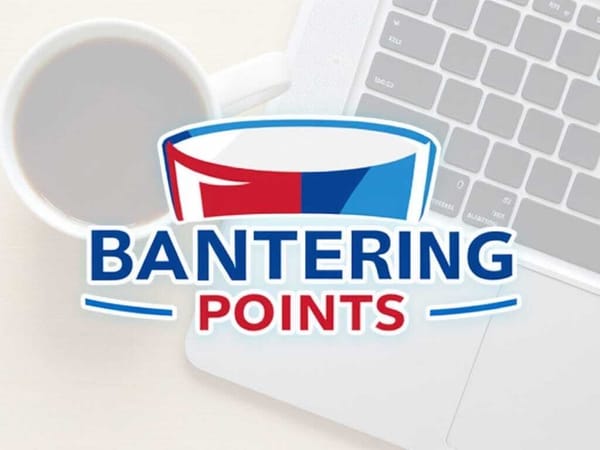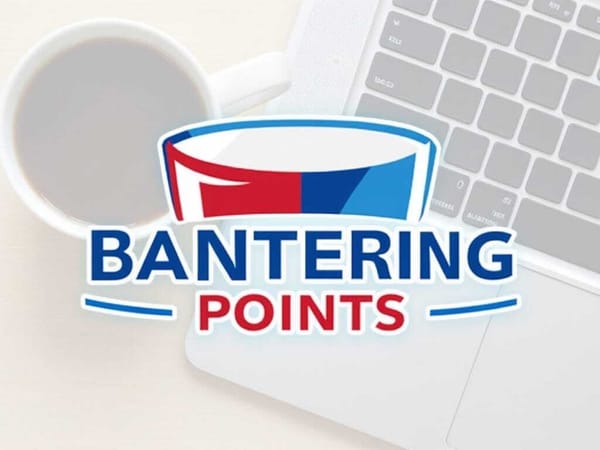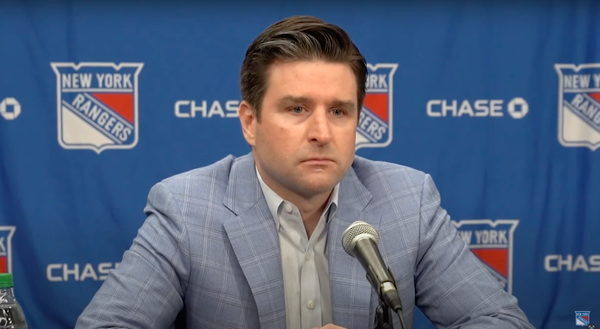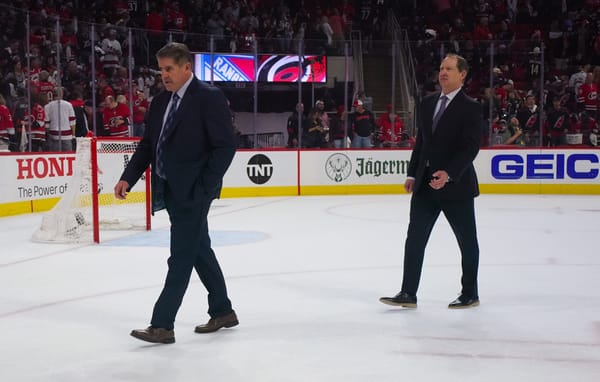Plugging the Holes: A Look at the Rangers’ PTO Options
Dually tasked with developing youth, the PTO market could be just what the doctor ordered for the Blueshirts
The David Quinn era will formally commence for the Rangers on October 4 when the puck drops against the Nashville Predators. But before things are made official, the Blueshirts will need to finalize their roster. Though much of the foundation of Quinn’s would-be roster is likely already set in stone, to suggest that the rebuilding Rangers are flashing no vacancy would be folly. In fact, a highly-anticipated training camp, expected to be especially competitive, lies in wait.
Though the roles most likely up for grabs are at or near the bottom of the roster, those are still openings to be claimed. Ones that the hardest-working veterans in camp could have the inside track on. But despite entering the first full season of their rebuild, the Rangers are also, perhaps most importantly, focused on the bigger picture — a grand vision that will depend heavily on the proper development of their most promising youngsters.
As such, it’s already a foregone conclusion that many of their prospects will be shutout on their first attempts to make the jump to the NHL this fall. It’s not just roster regulars and on-the-cusp AHLers they’re facing off against, either. One or more could lose their spot to an overlooked signing like Fredrik Claesson’s, or to a Professional Tryout contract (PTOs) turned NHL deal should the stars align for any veteran(s) invited to camp this fall.
While a return to Junior or an assignment to the also rebuilding Hartford Wolf Pack might feel like defeat to any given prospect cut from camp this fall, in almost every case, it’s likely the best course of action for their career development. After all, top minutes played in a development league are surely more beneficial to professional growth than a reduced role as the thirteenth forward on a team expected to lose more than it wins.
While the free agent class has been picked clean of obvious talent, there’s still value to be found from the remaining free agents on the market relative to the Rangers’ goals this season. So, let’s explore a handful of interesting options who the Blueshirts might benefit from by inviting to camp:
Tommy Wingels, LW/RW
Ahead of the free agent market opening back in June, Larry Brooks of the New York Post mentioned Wingels, 30, as a potential UFA target for the Rangers. It’s unclear if the Blueshirts did, in fact, explore contract talks with the veteran forward, but with September a mere three weeks away, Wingels is still unsigned and could be a prime target for a PTO.
Scoring has never really been the forté of the dual-position, right-handed winger. Certainly not at the NHL level where he’s now three seasons removed from back-to-back 30+ point campaigns with the San Jose Sharks from 2013 to 2015. But what he does bring is the kind of fiery, competitive nature that’s well-suited for a more traditional fourth-line role, if not as a team’s thirteenth forward.
His relative possession metrics — a minus-4.65 CF% rel over the last two seasons split across four clubs — are a bit of a red flag, but operating with a lower-than-average 96.15 PDO suggests he hasn’t been the beneficiary of much luck. Combined with the fact that the Rangers’ expectations over the next season or two surely can’t be very high, he might make for the kind of player worth taking a flier on through training camp and preseason — even if his greatest benefit is serving as a stop-gap while better players develop behind him.
Lee Stempniak, RW
A New York Ranger for all of 53 games back in 2014-15, Lee Stempniak, 35, has twice in the last three seasons found a considerable scoring streak playing middle-six minutes for a couple of poor New Jersey Devils and Carolina Hurricanes squads. In fact, that scoring touch totals 100 points split between the Devils, Hurricanes, and Boston Bruins over that stretch. Not bad for a journeyman.
Things took a bit of a dramatic dip for the career 0.52 point per game played (P/GP) player last season, who scored just nine points in 37 games. Those games almost all came after the turn of the new year, however, after injuries sidelined the start of his second season in Raleigh. But despite the likelihood Stempniak won’t be back for a third year with Carolina, the proclivity he’s shown as a quality depth scorer could be all the reason a team like the Rangers need to offer him another shot in New York.
Though not as physical as Wingels, Stempniak is perhaps a better model for a modern-day fourth-line player given his ability to do more than bang bodies and chip in the odd goal. He can double as a power play presence, plays both wing positions, and owns moderately positive relative possession numbers in two of his last three seasons. Even last year, with all that went wrong for him, he still finished his season with a plus-0.3 CF% rel.
When weighted against this two-year window in which the team expects to make a number of long-term determinations regarding said “big picture”, there’s little harm, if any, in inviting someone of Stempniak’s stature to make a bad situation a little less bad.
Troy Brouwer, RW
After getting rejected on offers issued to both Ryan Reaves and Leo Komarov this past July, the Rangers inexplicably brought back Cody McLeod to fill the role of enforcer on a team expected to house a handful of important young rookies. Without turning this into a referendum on the merits of employing such one-dimensional players in today’s game, if that role does still hold a place — however small — surely the Blueshirts could do better by themselves by hiring Troy Brouwer instead?
The Rangers should sign him and pretend the McLeod move never happened. https://t.co/pUI5EeuHfq
— Adam Herman (@AdamZHerman) August 2, 2018
Recently bought out by the Calgary Flames after back-to-back sub-30-point seasons, Brouwer’s best days are clearly behind him. But he does have the size (6’3, 215 lbs) and snarl that tends to endear him to fans and coaching staffs alike. That attitude can even help to mask on-ice deficiencies by helping to distract from an obvious lack of production.
After averaging around 12 goals and 28 points over the last three seasons, despite dipping totals year-to-year, there may still be enough gas left in his tank to fill a sort of hybrid fourth-line role somewhere between respectable scoring and pugilist.
The question on Brouwer is, how well can a career minus-2.4 CF% rel player with dwindling boxcar numbers square against the Rangers’ expectations as they begin this ever-important rebuild/retool/reshape/ad infinitum? Especially when a younger, better version of him in Michael Latta just left for the KHL, likely in anticipation of not being able to find steady work in today’s game. A PTO mitigates these risks, but they’re still important questions for Jeff Gorton to ask himself before extending any potential offer.
Cody Franson, RD
Nowhere do the Rangers need more help than on their blue line. Ryan McDonagh is gone. So is Nick Holden. Brady Skjei re-upped on a six-year ticket, helping to give shape to what the defense should look like in the years to come, but even with a healthy Kevin Shattenkirk to start the season, there’s ample room for improvement.
Though there’s a clear ceiling to just how much someone like Franson, 31, could help, surely he could help; particularly to aid the Rangers’ right side where the team’s depth is thinner than a supermodel. Should Brendan Smith’s road to redemption fall flat, the Blueshirts will likely be starving for offensive depth to fill out their ranks — the kind that someone like Steven Kampfer is highly unlikely to produce.
Over the last three seasons, Franson has maintained just shy of a 0.3 P/GP scoring pace and boasts positive career relative possession metrics. In fact, though he played in just 23 games with the Blackhawks last season, his plus-8.21 CF% rel lead all Chicago defenders, and his plus-5.66 rel xGF% was second among Windy City blueliners. Though he’s seemingly in a perpetual state of improving his coverage in his own end, in a relegated role with more favorable matchups, he could be a valuable depth option. And if not, then no harm, no foul. The Rangers can just cut bait and roll with whatever they’re more comfortable with. Again, the beauty of the PTO.
Remember kids, Cody Franson is /not/ an NHL-caliber player. pic.twitter.com/gFz2hCJJxA
— Sean Tierney (@ChartingHockey) March 23, 2018
Beyond the aforementioned group, the Rangers could show interest in additional forward options such as Tomas Jurco, Daniel Winnik, or Scott Harnell — the latter two of which could also add to the club’s overall toughness and veteran leadership quotas. They could also show interest in left-handed defenders they would need to ask to play on their offside like Brandon Davidson or veteran rearguard Paul Martin.
Regardless of who is tendered an invitation, the onus on Gorton should be to ensure he’s producing the most competitive training camp and preseason possible. The Rangers don’t project to be a very good team this season, with or without any late-summer additions (PTO or otherwise), which is all the more reason to emphasize and prioritize a strong team work ethic. Adding a veteran player or two on a PTO doesn’t just offer them that, but also the benefit of potentially purchasing an inexpensive insurance policy to bridge the development gap of some of their key prospects.
The Rangers wouldn’t exactly need to be trailblazers in employing this kind of strategy, either. One need only look north to the developing-toward-dominant Toronto Maple Leafs, who used this same tactic as they traversed their own rebuild. Like any decision to tear it down to the studs, the luck they made (by losing) in landing Auston Matthews certainly helped to propel things a lot faster than they currently stand to move in New York, but the principle is the same nonetheless.
For New York this season, matters will only be amplified by the pending free agent status of both Kevin Hayes and Mats Zuccarello, both of whom are expected to be traded by the coming season’s trading deadline. Not to mention the long-term questions that need to be answered on players like Ryan Spooner, Vladislav Namestnikov, and Jimmy Vesey — all of whom were given two-year extensions this summer. In fact, it’s entirely possible that come February and March, the Rangers will have been involved in the second team liquidation sale in as many years, opening even more future spots for their evolving fledglings. Filling those voids in the interim with quality veterans on short-term, non-problematic contracts could be smart business. Certainly smarter than asking teenagers and young twenty-somethings to run the risk of stalling their own professional growth to fill minor roles this early in their careers.
While one might argue that “blocking” a well-performing young player from an early start to their NHL career is akin to arrested development, it’s important to remember that succeeding in, not just making the NHL, is the goal. I’d also be remiss not to remind anyone subscribing to that theory that training camp and a handful of preseason games are about as small a sample size, littered with caveats, as can be produced. Which is why the big picture is so important to remember throughout this process. It’s the only one that actually matters.
As of today, just one player in Simon Després has agreed to a PTO for the coming season. He will be attending camp with the Montréal Canadiens in the hopes of cracking their blue line, or at the very least earning another NHL contract. But things should change on that front rather quickly as the month of August comes to a close. Not just for the Rangers, but the league as a whole.




